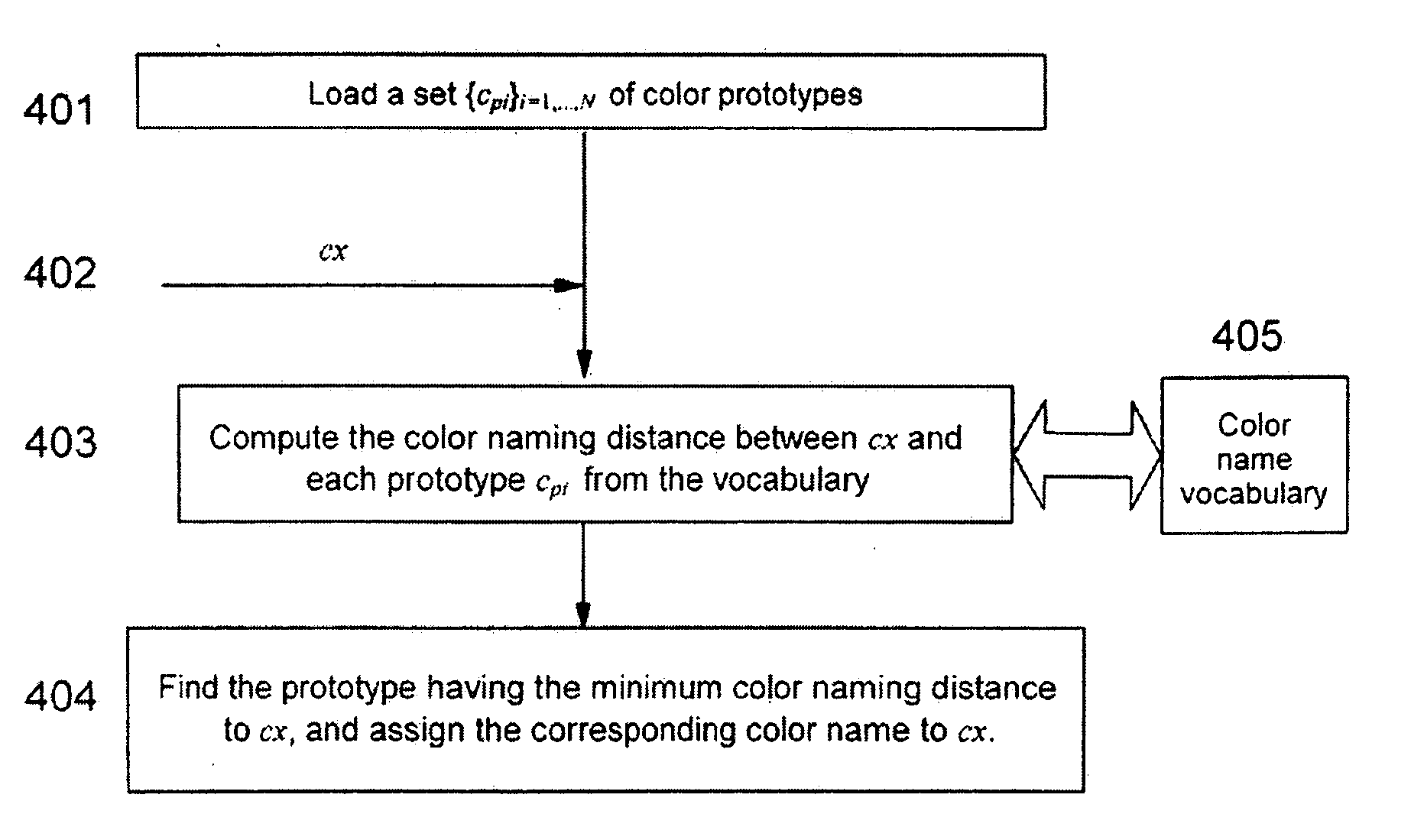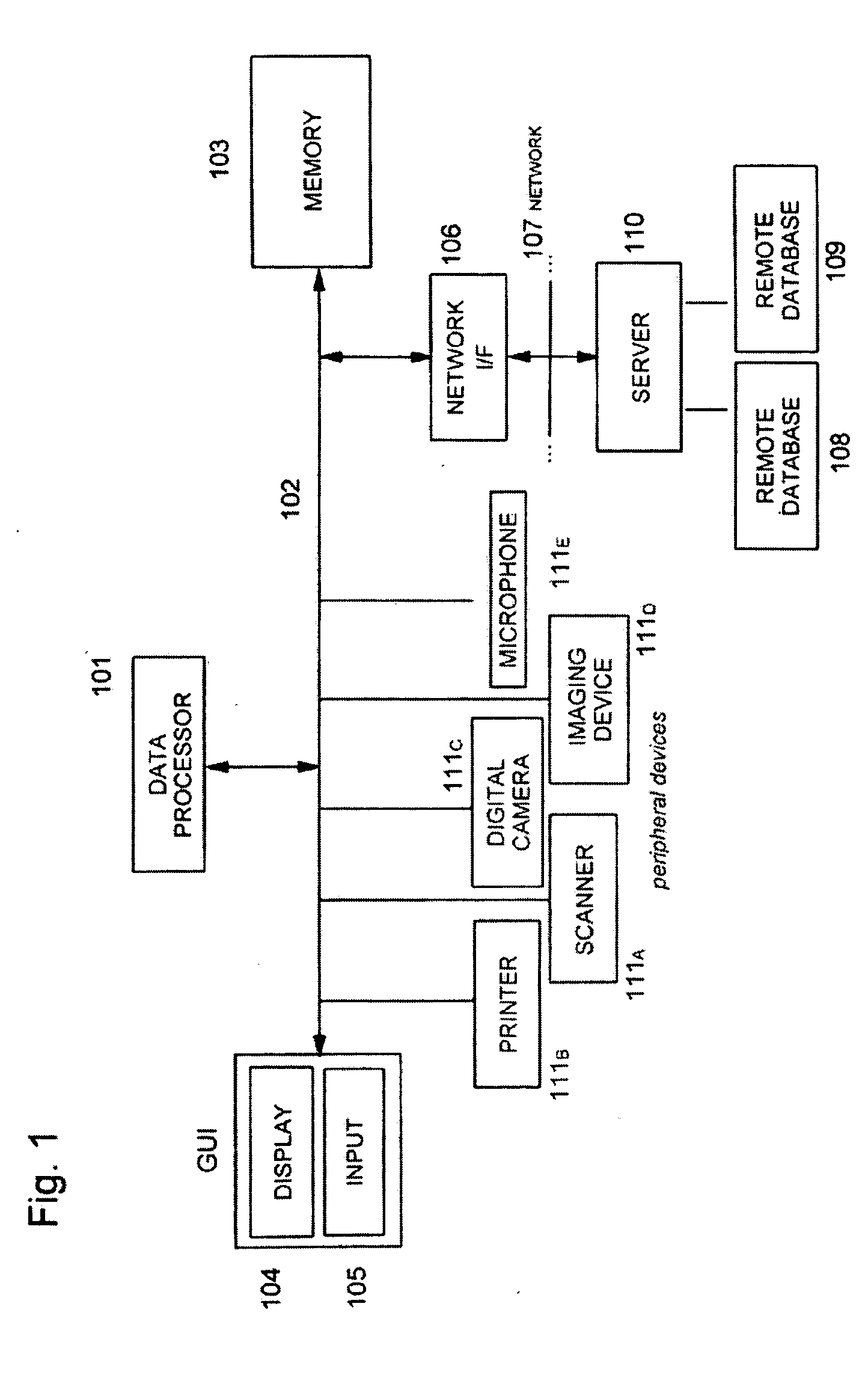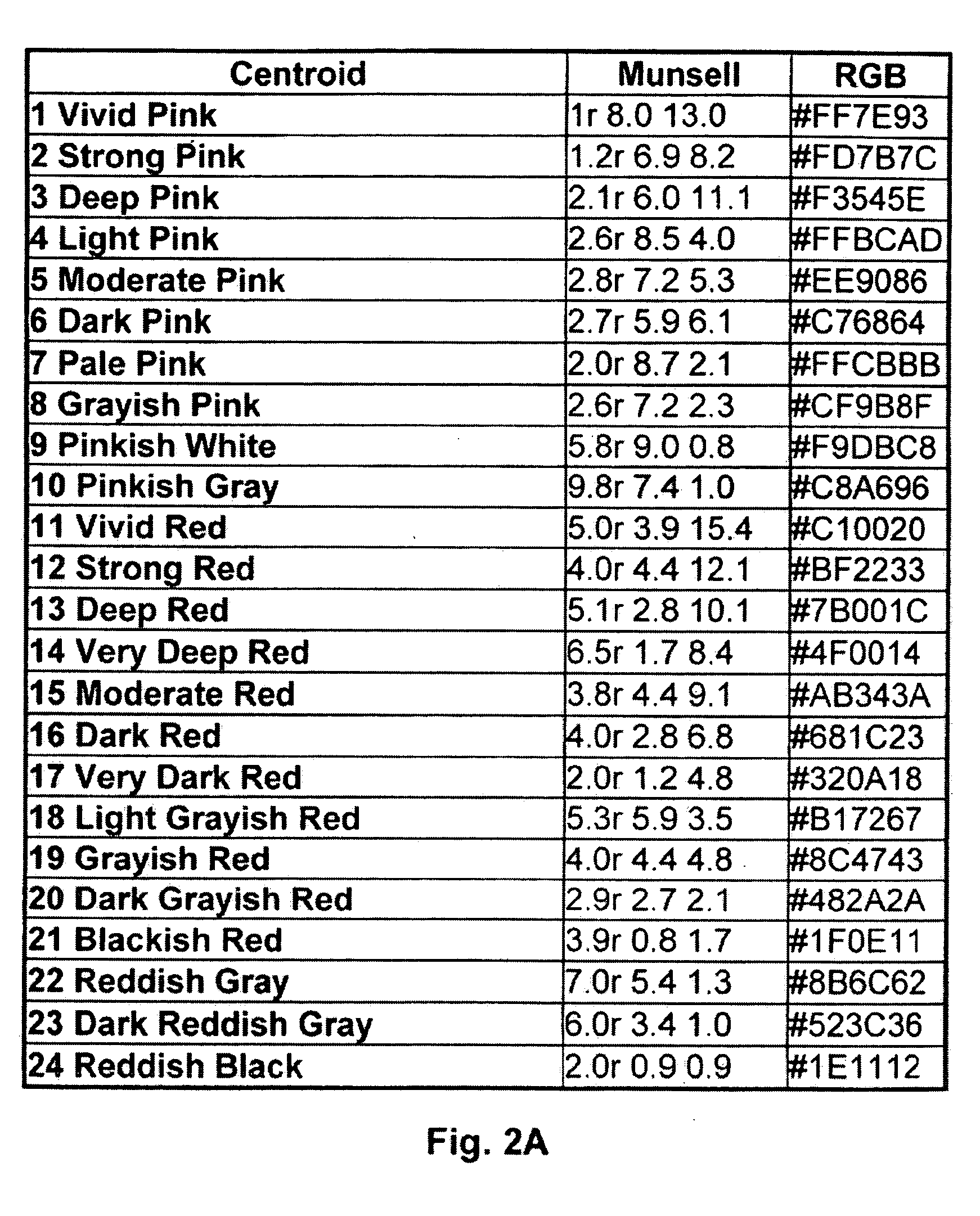Color naming, color categorization and describing color composition of images
a technology of image and color, applied in the field of digital images, can solve the problems of insufficient definition of color names as functions of wavelength range, insufficient understanding of color categorization and category membership mechanisms, and difficulty in extracting higher-level color descriptors
- Summary
- Abstract
- Description
- Claims
- Application Information
AI Technical Summary
Benefits of technology
Problems solved by technology
Method used
Image
Examples
Embodiment Construction
[0037] This invention provides image processing methods, apparatus and systems that are generally based on human perception, which: a) attaches a color name to an input color sample, b) describes objects and regions in an image with their color names, and c) generates the verbal description of image color composition. The methods are used in many image processing, computer vision, graphics and visualization applications. The methods enable development of better user interfaces and better man-machine interaction. The methods are implemented using a set of image processing algorithms, that analyze the input color value to determine optimal color name from the vocabulary of color names, and then process the image to break it into meaningful regions, determine the perceived color value of these regions and attach the color names appropriately. A first example of a method automatically assigns a color name to an input color value, or color sample, without requiring the use of a labor-int...
PUM
 Login to View More
Login to View More Abstract
Description
Claims
Application Information
 Login to View More
Login to View More - R&D
- Intellectual Property
- Life Sciences
- Materials
- Tech Scout
- Unparalleled Data Quality
- Higher Quality Content
- 60% Fewer Hallucinations
Browse by: Latest US Patents, China's latest patents, Technical Efficacy Thesaurus, Application Domain, Technology Topic, Popular Technical Reports.
© 2025 PatSnap. All rights reserved.Legal|Privacy policy|Modern Slavery Act Transparency Statement|Sitemap|About US| Contact US: help@patsnap.com



